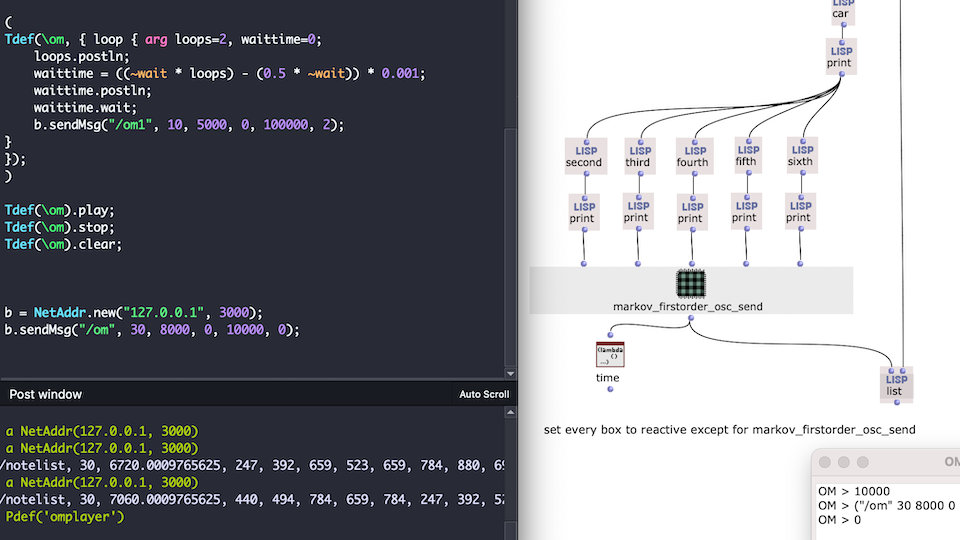Abstract: The Co-Creative Melody Generator is a system for simultaneous live coding with SuperCollider and OpenMusic. While in OpenMusic the music is created at note level, SuperCollider is responsible for sound generation. Communication takes place through the exchange of messages in the Open Sound Control protocol via user queries or automatically.
Responsible persons: Alexander Vozian
Overview:
The goal of the project was to integrate OpenMusic (OM) into a live coding workflow. My first idea was to use SuperCollider (SC) for sound generation and to outsource the setting of notes to OM. This means that you can code live in SC and use OM as an auxiliary tool. However, it became clear during the development that the OM patch can be changed in parallel during the sound output. As long as the sound-generating element is not interrupted, live coding can also take place in OM. For example, it is possible to prepare the selection of “instruments”, in this case SC synths, and control them completely in OM. Another more collaborative approach would be to split the two programs, SC and OM, between two live coders. For example, one person in SC could do the sound design, while another in OM sets these sounds in time.
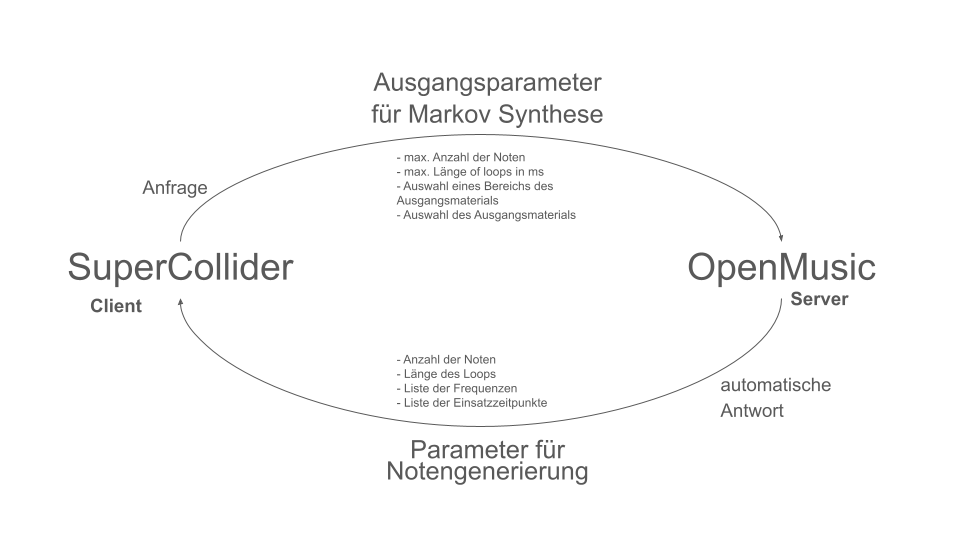
OM takes care of generating the notes and SC takes care of the sound synthesis. These communicate via the Open Sound Control (OSC) protocol. In SC, the user (live coder) sends a request to the OM patch via an OSC message. The message contains parameters for the generation of a melody, in this case for a Markov analysis and synthesis. The message consists of:
- the maximum number of notes,
- the maximum length of a loop in ms,
- the lower and upper limit of the source material to be analyzed in ms
- Selection of the source material.
The source material is a midi file, about 1 min long.
Sources of the midi files: bitmidi.com
After synthesis, OM automatically sends a message with the number of notes generated, the length of the melody in ms, a list of frequencies and a list of onsets. These are used to control the synths in SC.
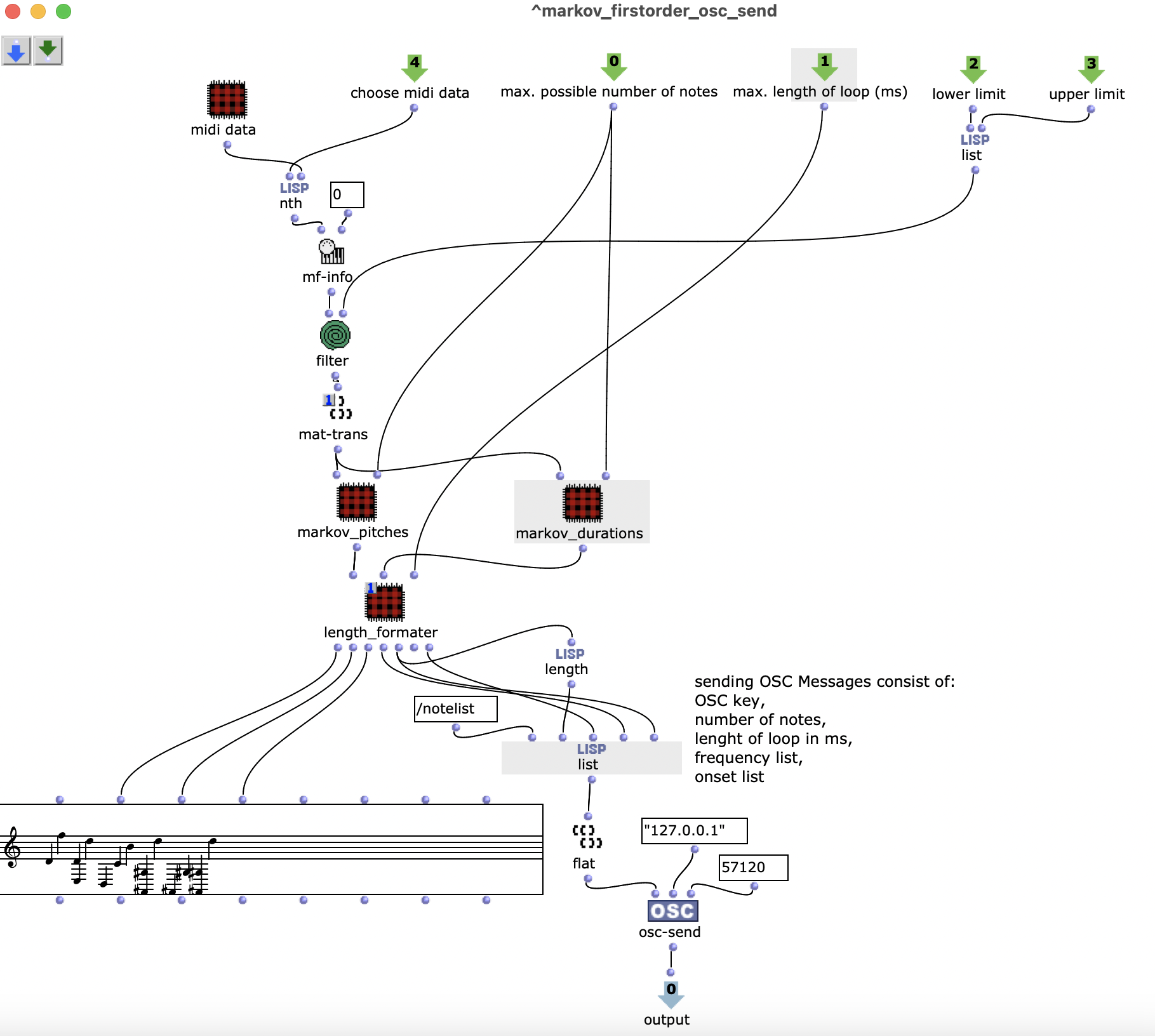
With each evaluation, note material is analyzed and a list of frequencies and onsets is synthesized and then output.
Midi files about 1 min long are used to generate the notes. The pitches and durations of the notes are analyzed independently of each other using first-order Markov functions from the OM-Alea library, synthesized and sent via osc-send. This results in tone sequences that do not occur in the original files. (The patch ensures that the list of pitches and durations is the same length) The input arguments are already described above.
An OSC message from OM to SC consists of the following data:
- OSC Key as identifier,
- Total number of notes,
- Length of the melody in milliseconds,
- List of frequencies,
- List of onsets.
In this case, the total number of notes is only used to navigate through the unformatted OSC message. The length of the melody is required to determine the time at which the next melody is requested. The list of frequencies and onsets is only compiled in SC.
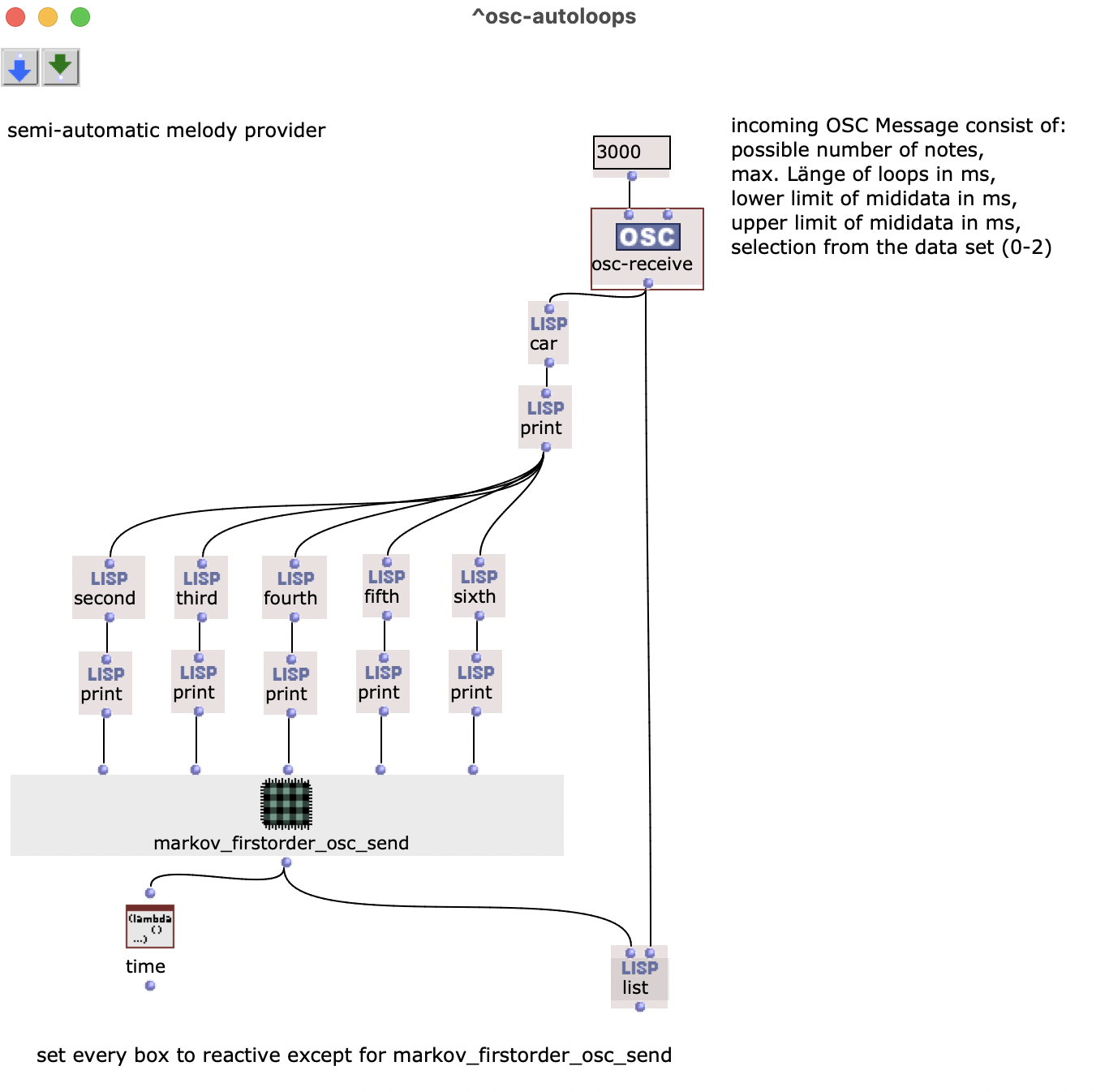
The osc-send function is in the patch markov_firstorder_osc_send. To execute the patch automatically when an OSC message arrives, all parts of the higher-level patch are set to reactive mode. The list function can only be evaluated when all forms deliver a result, i.e. when the Markov synthesis has been completed and osc-send has been executed.
The result is a kind of server that automatically sends back a melody when a request is received from SC.
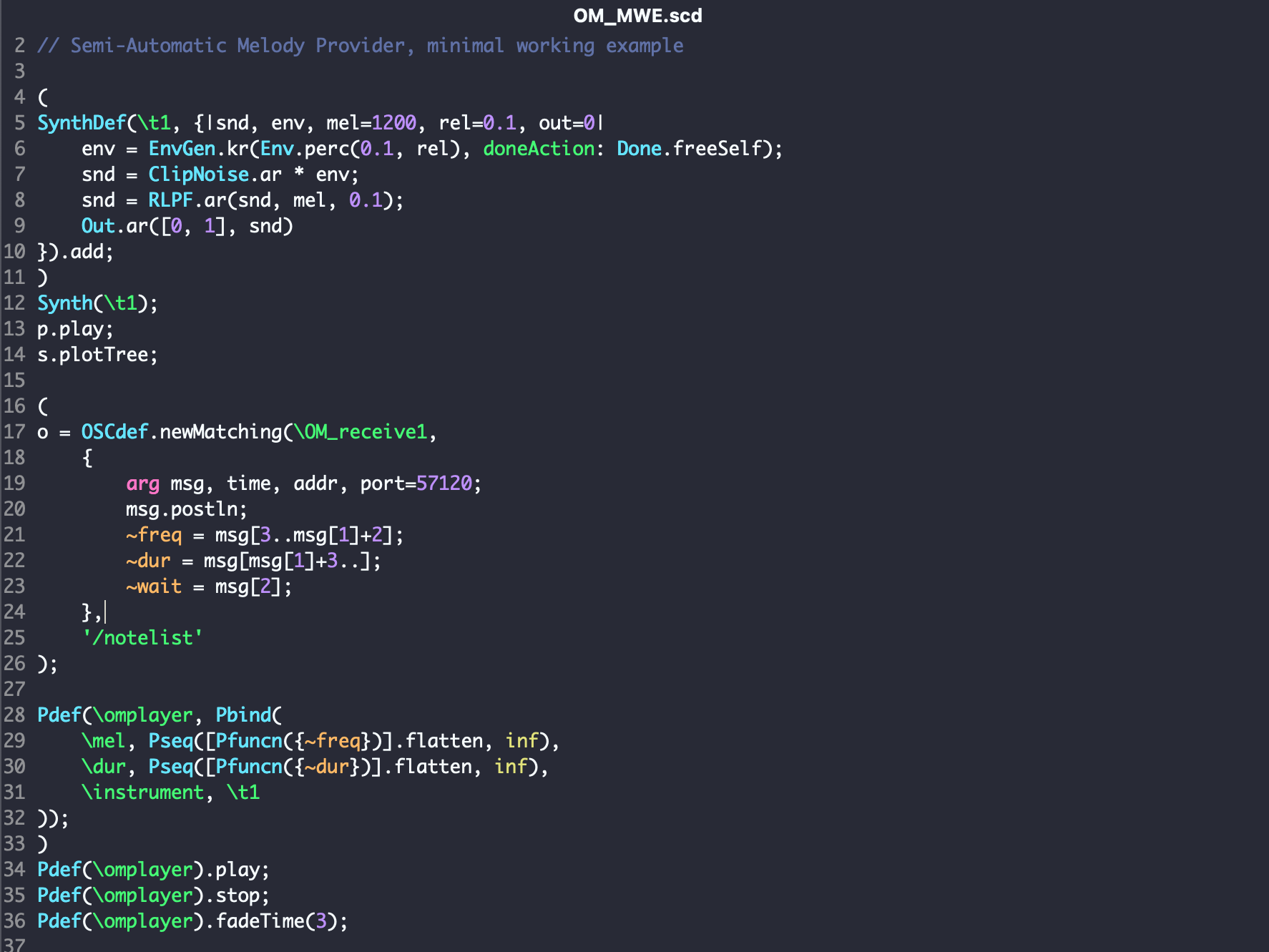
A new instance of OSCdef is created in SC, which saves the parameters received in global variables. A synth(t1) is defined that can be played by patterns. The Pfuncn function interprets the global variables ~freq and ~dur as functions and thus constantly queries them. The Pseq function converts these into a sequence, which is converted into a pattern by Pbind. Thus, the first parameter of ~freq with the first parameter of ~dur forms the first note of the melody. The Pdef function creates an instance that can be changed during runtime. This also ensures that a running loop only plays a new melody after the end of a melody.

To request a new melody, a new loop, it is sufficient to send an OSC message with the corresponding parameters. To automate this process, you need the Tdef.
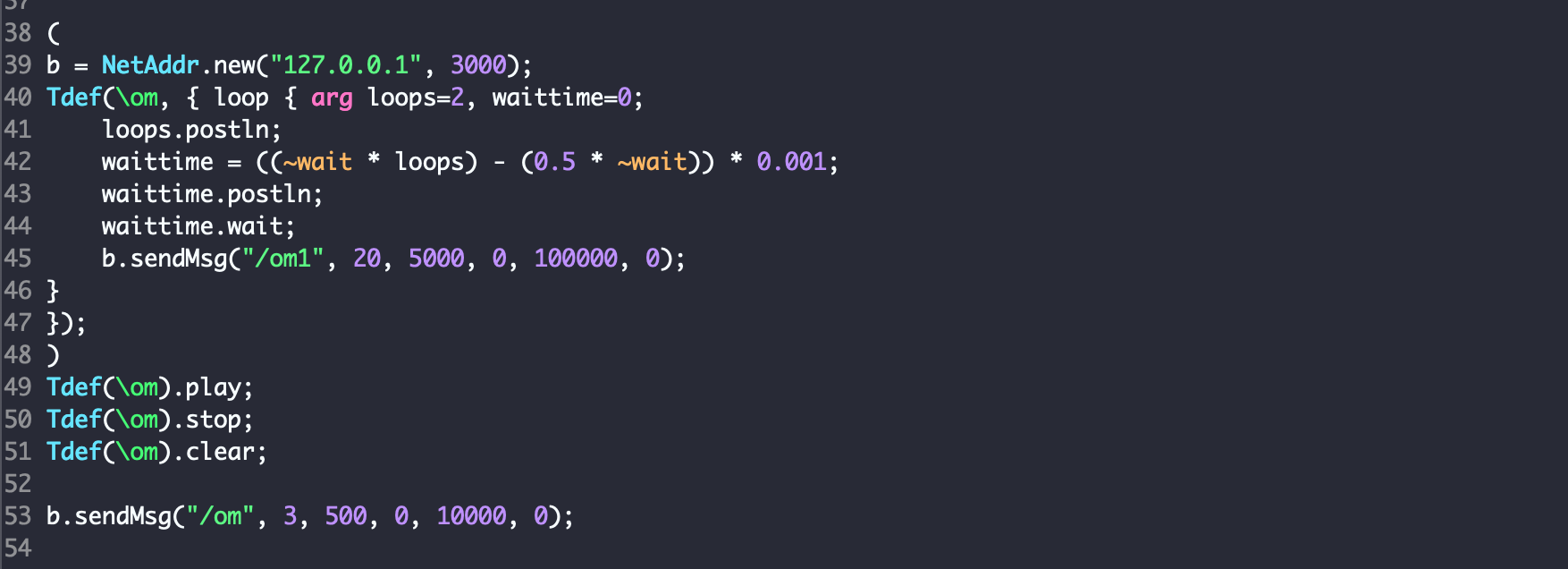
Just as the execution of a code block in SC can have a direct influence on the sound and must therefore be embedded correctly, the evaluation of a patch must take place at the right time. In the case of the MWE, it is not the sound that would be interrupted, but the meter.
Tdef(om) first calculates the time period with which the sending of the OSC message is delayed. The delay time depends on the total length of the loop and the number of loops that can be set within the Tdef. This ensures that the existing loop is always played to the end before the parameters for a new melody arrive.
The code for OM and SC can be found via this link.
Finally, the following sound example for the project:
Only the maximum length of a loop and the number of notes are changed. The source material is changed at two points. It starts with “Mario”, changes at around 1:39 to “Pokemon” and at 2:24 to “Tetris”. In the example, nothing is deliberately changed in the sound of the instrument (simple saw wave) in order to focus on the changes in the note material.
Mario – Main Theme Overworld:
Pokemon – Battle (vs Wild Pokémon):
Tetris Theme:
Result:
Sources of the midi files: bitmidi.com
